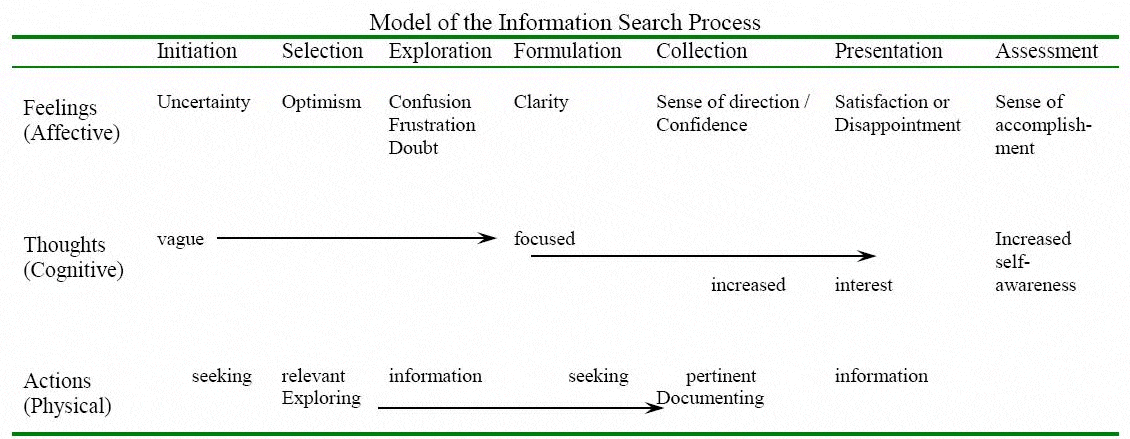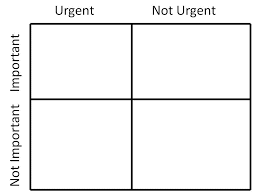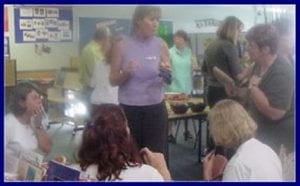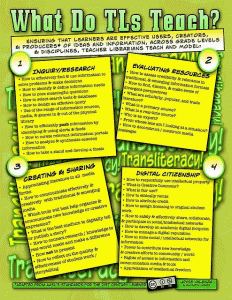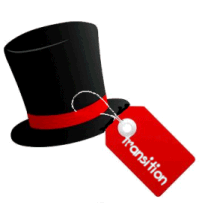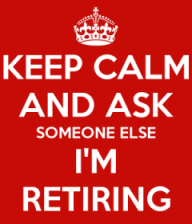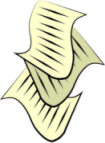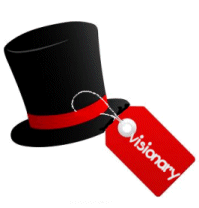
Libraries have been part of society’s culture since man first began to convey information by etching images on the walls of caves. School libraries have been part of the Australian education system since well-meaning people in London sent religious texts to recently-established Sydney so the children of the convicts would learn to read the scriptures, learn from them and become better people than their parents. But libraries, like society, change so they can meet the needs of their users and remain relevant in the context in which they sit. Digital technoliges have replaced markings on cave walls, and school libraries have evolved to be much more than a repository of religious readings.
These changes have not happened because Tinkerbell sprinkled fairy dust. They’ve been inspired by visionaries in the profession – those who have the ability to see around corners and over hills; who see obstacles as opportunites; who aspire and inspire and lead change which others are compelled to emulate.
With the introduction and implementation of a national curriculum in Australian schools, and the rollout of the Common Core Standards in US schools, and other significant changes being made as the developments in technology roll inexorably on, this is a time for great change and great opportunities in school libraries – change that can be directly linked to mandated requirements and supported by evidence that makes its acceptance and resourcing more likely.
But for change to be successful and sustainable, it needs to be planned and supported. In my very first post on this blog I explained my adherence to Covey’s mantra of “Begin with the end in mind”, and this is essential to the change process.
To begin with the end in mind means to start with a clear understanding of your destination. It means to know where you are going so that you better understand where you are now and so that the steps you take are always in the right direction … how different our lives are when we really know what is important to us, and, keeping that picture in mind, we manage ourselves each day to be and to do what really matters most.
Covey, S. (1989) The 7 Habits of Highly Effective People
Melbourne: Information Australia
To have a vision of the destination so your journey continually leads towards that is essential. Encapsulating the dream in a precise and succinct statement provides the focus and foundation on which to develop a strategic plan incorporating goals, policies, strategies, performance indicators, and a timeframe that will lead to its achievement.
the vision statement
Creating a vision statement is a complex task. It is a narrow, future-oriented declaration of the library’s purpose and aspirations.
Firstly, you need to know what you want to achieve so you need to know
- What does a best-practice library look like?
- What does a best-practice teacher librarian do?
There are many models on which you can base your ideas – my favourite is the Springfield Township High School Library developed under the guidance of Joyce Valenza – and the Standards of Professional Excellence for Teacher Librarians statement developed by ASLA is an essential guide to the sort of professional knowledge, practice and commitment a top-shelf TL has.
Regardless of the model (or combinations of models) you use, your vision must be in alignment with your own beliefs or it will never sit well or be a good fit. Go back to The Teacher’s Hat and revisit your beliefs about being both a teacher and a teacher librarian and create a new manifesto based on what you believe a top-shelf library should look like including the elements which drive your
- literacy and literature programs and collections
- research and information literacy programs and collections
- services you offer your clients
- environment in which you and they work
Articulating your beliefs in such a way takes them out of the world of the airy-fairy and into a tangible document that can be used to shape goals and defend decisions.
However, you need to keep in mind the practicalities of your particular situation. Consideration must be given to any requirements, restrictions or expectations put on your vision by your school and only you can decide if these are important enough to embrace as an enhancement of your beliefs, adapt so they fit with your beliefs or try to change through evidence of better practice To set impossible goals based on someone else’s ideality rather than your reality only leads to despair and despondency as it looks like failure.
The next step is to craft a mission statement so the purpose of the library and its place within the school’s philosophy, ethos and educational programs are explicit. It is based on those beliefs, values and principles that are at your inner core, be they personal or corporate. It needs to be clear and concise and should answer the questions
- What is this library about?
- What does it stand for?
- How do we demonstrate these?
It is the basis for all decisions made regarding policy, procedures and practice and sets the guidelines and parameters for the services you offer
A sample mission statement can be found here
However, it is essential to understand the difference between a mission statement and a vision statement – the former defines your purpose, your reason for being; whereas a vision statement identifies your future direction.
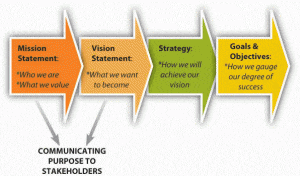
The next step involves several key elements
- reading and research identifying what is, what needs to be and what could be for the three key hats that the teacher librarian wears – curriculum specialist, information specialist and information services manager
- identifying specific areas of focus to develop policies, programs, procedures, practices and priorities
- drawing on the perceptions and needs of the stakeholders so that the vision is shared and they feel they have ownership of it and can make a contribution towards its success.
identifying what is
Establishing the current state of the library’s programs, services and environment is essential because it identifies its strengths and its needs, as well as establishing a benchmark against which future progress can be measured. It identifies whether what is currently on offer is valid, valued and valuable.
There are several ways that this can be done – the most common being a SWOT analysis. Rather than trying to assess everything in one analysis, it may be more practical to identify the key factors that make up what you offer and on both the educational and resourcing sides of the coin and analyse them individually, then combining them into a summary.

SWOT Analysis
A STEEP analysis is another option or you might consider purchasing Strategic Planning for Nonprofit Organizations: A Practical Guide and Workbook, 2nd Edition which has a whole section on assessing the current situation including
- preparing a history and descriptive profile of operations
- articulating previous and current strategies
- gathering information from internal and external stakeholders
- gathering information from documents and other sources
- summarising the information into a situational assessment
identifying what needs to be
School library programs and services and the environment in which they sit are subject to outside influences such as mandated curriculum, identified school priorities and the needs, interests and abilities of their clientele so establishing and articulating what these are and how they shape what is delivered is essential. As well as pinpointing what the essential elements are, they also provide evidence to support any proposed changes enhancing the likelihood of the vision being accepted and resourced.
identifying what could be
Start by examining the Standards of Professional Excellence for Teacher Librarians and identifying some personal professional goals that will guide your professional learning and practice and may lead to innovation and initiatives that have not been considered.
Identify leaders in the field such as Joyce Valenza, Buffy Hamilton, Judy O’Connell, Doug Johnson and Lyn Hay and follow their blogs and other social media communications to see what’s happening at the leading edges and how you might be able to adapt it to your situation. Look for Facebook groups such as iCentre and Evidence-based Practice for School Libraries and for Pinterest boards and so forth which share photos and links that can provide inspiration.
Standing on the shoulders of giants is a great way to become a giant yourself and instead of following the pack, you become a leader of it.
Create surveys for your clients that give them input into what they would like the library to provide and go out of your way to find out the needs of the long tail -those whose needs and interests are not met by the common, the popular or the overtly-on-offer and who do not use the library’s services becasue of this.
Writing the vision statement
The final step in this process is writing the vision statement. Visions statements need to be precise and concise stating what the library and its services (educational, resourcing and environmental) will be like at the end of the time period (usually three years or in line with the school’s development plan.) They are aspirational using superlative language that inspires others to want to be part of the process.
The vision statement for my current school library is
An excellent 21st century library which supports the teaching and learning at xxxx Primary School.
Having identified where you are going and where you want to be it is time to put on your leader’s hat but that is another post for another day.
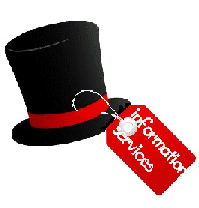 Fitting as snugly as the first two, the third hat is that of the information services manager, perhaps the most complex of the three because it is the one that combines both the T and L side of Teacher Librarian and is the one that most clearly demonstrates why we have those post-grad qualifications. Learning for the Future (2nd edition) (ASLA & ALIA, 2001) describes this hat as the one which requires the TL to
Fitting as snugly as the first two, the third hat is that of the information services manager, perhaps the most complex of the three because it is the one that combines both the T and L side of Teacher Librarian and is the one that most clearly demonstrates why we have those post-grad qualifications. Learning for the Future (2nd edition) (ASLA & ALIA, 2001) describes this hat as the one which requires the TL to 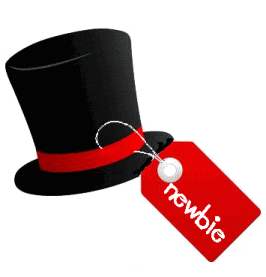 Your TL degree is so new and shiny that the dust hasn’t had time to settle on its frame yet, but in a few short weeks you are going to be stepping into your dream job – the one you’ve been thinking of for years and have undertaken hundreds of hours of gruelling study to achieve.
Your TL degree is so new and shiny that the dust hasn’t had time to settle on its frame yet, but in a few short weeks you are going to be stepping into your dream job – the one you’ve been thinking of for years and have undertaken hundreds of hours of gruelling study to achieve.